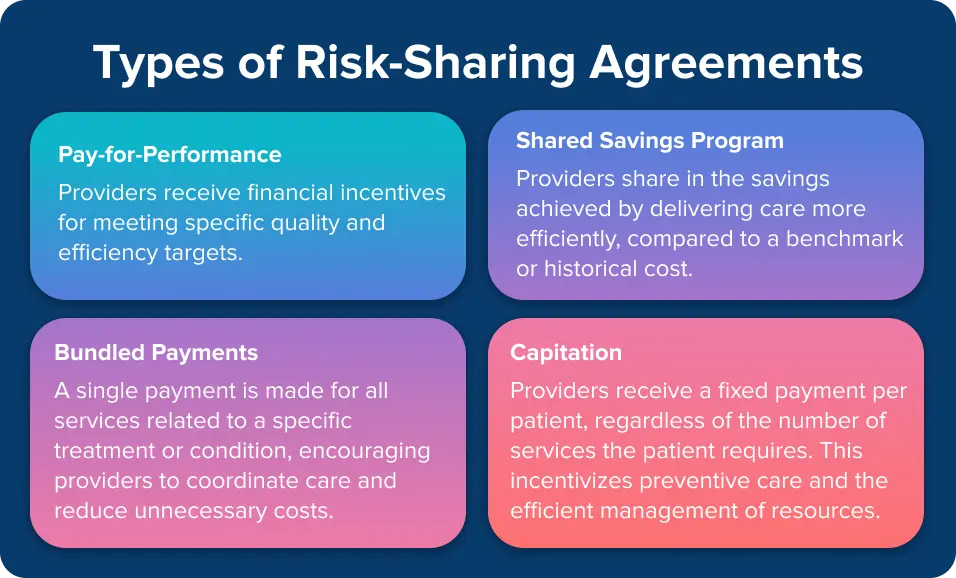Healthcare in the U.S. is transforming as many provider networks shift from fee-for-service (FFS) models to those that prioritize patient outcomes.
This new approach, value-based care (VBC), emphasizes high-quality, cost-effective care that enhances patient outcomes and lowers the overall cost burden on the healthcare system.
Shifting to value-based care from an FFS model is a significant but long-term investment that will benefit providers, patients, and payers alike.
Let’s take a closer look at what does shift to value-based care mean and why it is important for the future of healthcare in the U.S.
What Does Shift to Value-Based Care Mean?
The shift to value-based care involves moving away from a system where healthcare providers are paid based on the quantity of services they deliver–like in traditional FFS models–to one where they are compensated based on the quality and cost-efficiency of care.
Under VBC, providers are incentivized to focus on patient outcomes, care coordination, and preventive measures that improve overall health and reduce long-term care costs.
Additionally, and perhaps more importantly, when you remove all the buzzwords and operational changes to shift to value-based care, it comes down to creating more value for patients.
Therefore, achieving and measuring the value created for payers, patients, and providers participating in value-based care models requires careful collaboration between all stakeholders to ensure the long-term sustainability of this transition.
Why Transition to Value-based Care?
Value-based care is on its way to becoming ubiquitous in healthcare, which puts pressure on healthcare stakeholders to adopt the system to remain competitive.
Besides the growing value-based care trend alone, there are many reasons why a clinic would transition to a VBC model.
As healthcare costs continue rising, public and private stakeholders have sought alternatives that could lower expenses while still delivering high-quality care.
The financial incentives for providers, coupled with improved patient outcomes, help address these concerns.
By aligning stakeholders on incentives, focusing on preventive care, and reducing the overall number of services rendered, VBC has the potential to reduce workloads across the healthcare industry without sacrificing patient outcomes or revenue.
The transition is also driven by policy shifts, including Medicare and Medicaid’s push toward VBC models.
The Center for Medicare and Medicaid Services intends to transition 100% of Medicare and the vast majority of Medicaid recipients to value-based care by 2030.
Challenges
Despite the benefits VBC promises for providers and clinics, transitioning to value-based care comes with its fair share of challenges. These include:
Complexity of implementation
Moving from FFS to VBC requires significant infrastructure changes, including adopting new technologies, data analytics tools, and care coordination platforms.
Data management
To effectively measure and improve patient outcomes, healthcare organizations must have access to accurate, real-time data across different care settings, which requires dedicated attention to tracking such data.
Stakeholder buy-in
Both providers and patients must adapt to a new approach to healthcare delivery.
Risk-bearing models
Providers may face financial risks, especially in VBC contracts that involve shared-savings or shared-risk arrangements, as they are held accountable for the cost and quality of care.
Healthcare stakeholders who want to take a more conservative approach to shift to value-based care can make incremental changes when adopting value-based care strategies, payment models, and operational shifts.
Tech Solutions for the Shift to Value-Based Care
Clinics can alleviate many of the challenges they face in transitioning to value-based care with the right technology solutions.
Products that help surface and aggregate relevant and actionable patient data at the point of care can help healthcare professionals manage risk, address gaps in care, and maximize their patient outcomes, leading to the best results for patients, providers, and payers.
Take a chronic condition like diabetes as an example. With the help of advanced data analytics platforms, healthcare providers can analyze patient data from EHRs, lab results, and wearable devices to identify individuals at high risk for complications.
These platforms can predict potential health deteriorations before they occur, allowing providers to intervene early with preventive measures, such as medication adjustments or lifestyle recommendations.
By presumably lowering the overall cost of care for the diabetic population by intervening early to avoid higher-cost procedures down the line, a provider would be financially rewarded for the savings they produced through structures like shared savings programs and risk-sharing agreements.
These VBC technologies are often sponsored by health plans and VBC Enablers to streamline the engagement of their provider networks in value-based care operations (see the next paragraph for additional resources to help providers shift to value-based care).
Additional Resources for the Shift to Value-Based Care
In addition to technology solutions, organizations like Accountable Care Organizations (ACOs), Management Services Organizations (MSOs), aggregators, and other provider networks play a critical role in supporting the shift to value-based care.
These entities offer services to facilitate the transition, including VBC contracting, performance tracking, and wraparound support services that help providers improve care delivery and lower costs under risk-bearing models.
These organizations also help providers navigate complex regulatory requirements and establish the financial arrangements needed to succeed in VBC, such as shared savings programs and risk-sharing agreements.
At Vim, we work closely with ACOs, MSOs, and other VBC enablers by bringing their resources directly to providers at the point of care.
Our technology integrates seamlessly with existing EHR systems, surfacing actionable insights at the clinician’s fingertips, helping providers close Care Insights, manage risk, and maximize patient outcomes.
By aligning technology with VBC objectives, Vim empowers healthcare organizations to operate more efficiently and effectively in a value-based care environment.
Final Thoughts
The shift to value-based care represents a monumental change in how healthcare is delivered and paid for in the U.S.
While the journey is complex and requires overcoming significant challenges, the potential benefits of improved patient outcomes and reduced costs make it worthwhile.
As healthcare organizations adapt to this new model, technologies enabling care coordination, data sharing, and real-time analytics will be crucial for success.
At Vim, we commit to supporting healthcare providers in navigating this transition by offering solutions that streamline workflows and connect disparate systems, empowering better care delivery in a value-based world.
——————————–
At Vim, we understand the complexities of transitioning to value-based care and help healthcare organizations succeed in this new landscape.
Our technology solutions enhance care coordination, improve data interoperability, and provide actionable insights at the point of care, all essential for maximizing patient outcomes and minimizing costs.
As the healthcare industry continues shifting to value-based models, Vim is here to support providers every step, ensuring they have the tools they need to thrive in a value-driven future.


